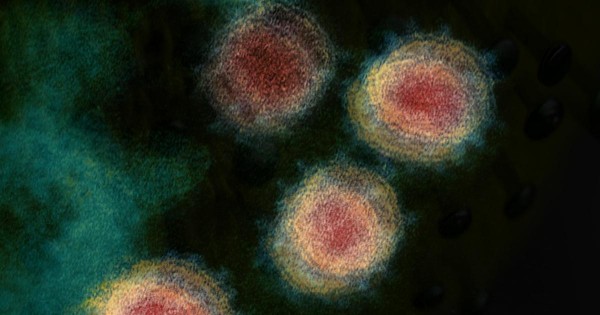Shapeshifting: What Made the Virus Jump From Animals to Humans?

shankar s.
A recent genetic study from a group of researchers from Duke University, Los Alamos National Laboratory, the University of Texas at El Paso, and New York University found a discovery about early-stage SARS-CoV-2. The researchers detected that the virus had the ability to transform itself as it leaps from animals to humans physically. Being basically a 'shapeshifter' made the virus easily contaminate human cells.
In the study, researchers have established the SARS-CoV-2 is indeed a virus that is related to a coronavirus strain that has the ability to infect bats. Speaking on a microscopic level, the virus's capability for infection was mainly reinforced by the exchange of a critical gene fragment from a coronavirus gene that is able to infect a pangolin. And as a result, transmission to humans are now possible.
These species-to-species interactions are due to the virus's natural ability to form a bind with host cells. In a much simpler sense, it's as if the virus acquired a key that could unlock a door, which is analogous to the human cell. Here, a spike protein that is found on the surface of the virus acts as the "key."
Feng Gao, M.D., a professor of Medicine in the Division of Infectious Diseases at Duke University School of Medicine explained that the mechanism is the same if we look at how the original SARS was able to transfer from bats to civets or how MERS was able to transfer from bats to dromedary camels
"Very much like the original SARS that jumped from bats to civets, or MERS that went from bats to dromedary camels, and then to humans, the progenitor of this pandemic coronavirus underwent evolutionary changes in its genetic material that enabled it to eventually infect humans," he said.
IN CASE YOU MISSED IT: US COVID-19 Death Toll Goes Beyond 100K Four Months After First Reported Case
Gao and his fellow researchers have noted that the usual pangolin coronaviruses have already evolved and are too different from SARS-CoV-2 for them to be blamed for the current pandemic. So they have theorized that tracing the evolutionary pathway of the virus could help in the development of a vaccine.
Nevertheless, the SARS-CoV-2 spike protein did have a receptor-binding site, which is that part of the protein that allows binding to the cell membranes of human respiratory and intestinal epithelial cells, endothelial cells, and kidney cells.
ALSO READ: Are Human Test Trials for COVID-19 Humane? U.K. Researchers Want To Push the Possibility
In the study, the researchers have noted that SARS-CoV-2 could be a hybrid between bat and pangolin viruses.
"There are regions of the virus with a very high degree of similarity of amino acid sequences among divergent coronaviruses that infect humans, bats, and pangolins, suggesting that these viruses are under similar host selection and may have made the ancestor of SARS-CoV-2 able to readily jump from these animals to humans," explained co-author Xiaju Li from Duke University.
READ MORE: Coronavirus Update: Companies and Their Progress on the Development of a Vaccine
The study was published in the journal, Science Advances.
May 30, 2020 08:10 AM EDT




